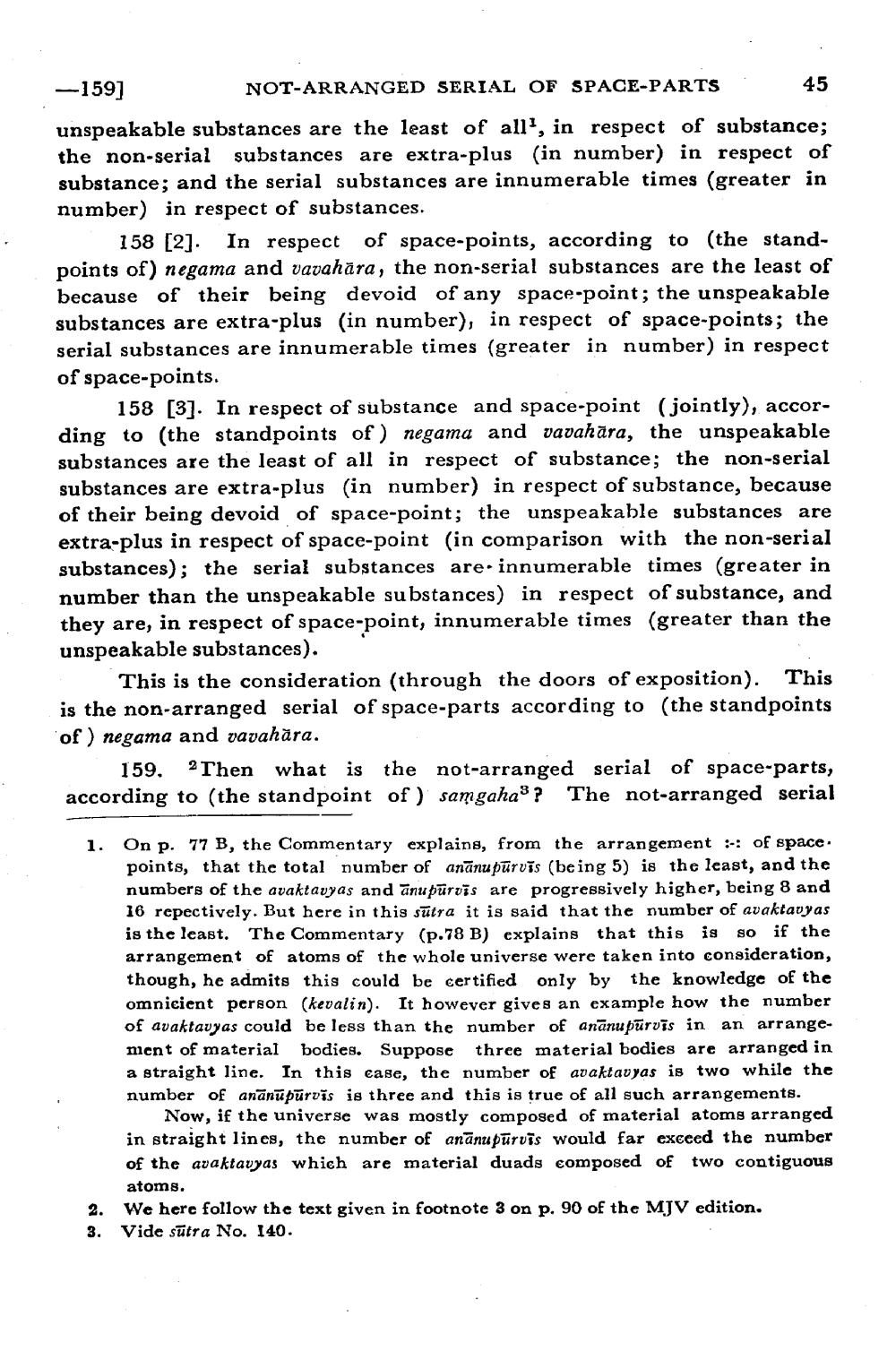________________
-159]
NOT-ARRANGED SERIAL OF SPACE-PARTS
unspeakable substances are the least of all, in respect of substance; the non-serial substances are extra-plus (in number) in respect of substance; and the serial substances are innumerable times (greater in number) in respect of substances.
158 [2]. In respect of space-points, according to (the standpoints of) negama and vavahara, the non-serial substances are the least of because of their being devoid of any space-point; the unspeakable substances are extra-plus (in number), in respect of space-points; the serial substances are innumerable times (greater in number) in respect of space-points.
158 [3]. In respect of substance and space-point (jointly), according to (the standpoints of) negama and vavahara, the unspeakable substances are the least of all in respect of substance; the non-serial substances are extra-plus (in number) in respect of substance, because of their being devoid of space-point; the unspeakable substances are extra-plus in respect of space-point (in comparison with the non-serial substances); the serial substances are innumerable times (greater in number than the unspeakable substances) in respect of substance, and they are, in respect of space-point, innumerable times (greater than the unspeakable substances).
This is the consideration (through the doors of exposition). This is the non-arranged serial of space-parts according to (the standpoints of) negama and vavahăra.
45
159. 2 Then what is the not-arranged serial of space-parts, according to (the standpoint of) samgaha? The not-arranged serial
1.
si ci
2.
3.
On p. 77 B, the Commentary explains, from the arrangement of space. points, that the total number of ananupurvis (being 5) is the least, and the numbers of the avaktavyas and anupurvis are progressively higher, being 8 and 16 repectively. But here in this sutra it is said that the number of avaktavyas is the least. The Commentary (p.78 B) explains that this is So if the arrangement of atoms of the whole universe were taken into consideration, though, he admits this could be certified only by the knowledge of the omnicient person (kevalin). It however gives an example how the number of avaktavyas could be less than the number of ananupurvīs in an arrangement of material bodies. Suppose three material bodies are arranged in a straight line. In this case, the number of avaktavyas is two while the number of ananupūrvis is three and this is true of all such arrangements.
Now, if the universe was mostly composed of material atoms arranged in straight lines, the number of ananupurvis would far exceed the number of the avaktavyas which are material duads composed of two contiguous
atoms.
We here follow the text given in footnote 3 on p. 90 of the MJV edition. Vide sutra No. 140.




